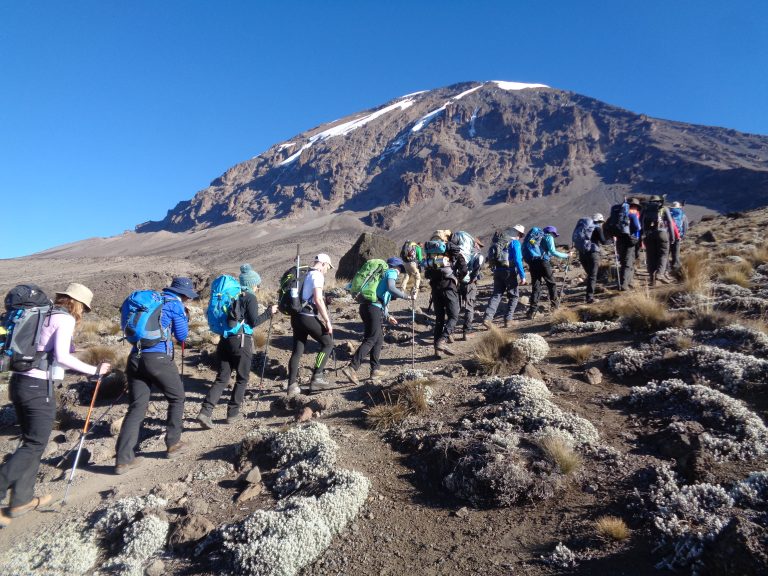Wildlife Encounters on Your Mount Kilimanjaro Climb: Discovering Nature’s Hidden Gems
Introduction
Climbing Mount Kilimanjaro is not only an adventure to reach Africa’s highest peak but also an opportunity to experience the unique wildlife that inhabits its diverse ecosystems. Mount Kilimanjaro wildlife encounters enrich the climbing experience, offering trekkers a chance to connect with nature and discover the hidden gems of this iconic mountain. From lush rainforests at the base to alpine deserts near the summit, Kilimanjaro is home to a variety of flora and fauna that create a captivating backdrop for your ascent.
Diverse Ecosystems and Their Inhabitants
Mount Kilimanjaro boasts several distinct ecosystems, each hosting unique wildlife:
- Rainforest Zone (1,800 – 2,800 meters): The lower slopes of Kilimanjaro are covered by lush rainforest, teeming with life. As you trek through this vibrant ecosystem, keep an eye out for:
- Colobus Monkeys: These striking black-and-white monkeys are known for their acrobatic skills and can often be seen swinging through the trees.
- Blue Monkeys: Recognizable by their blue-gray fur, these monkeys are usually found in small groups, foraging for fruits and leaves.
- Bushbucks and Duikers: These shy antelopes may be spotted grazing or hiding in the underbrush, showcasing the diversity of herbivores that thrive in the forest.
- Heath and Moorland Zone (2,800 – 4,000 meters): As you ascend into the heath and moorland, the forest gives way to heather and giant groundsel plants. Here, you may encounter:
- Giant Pika: This small mammal, related to rabbits, is often seen darting among the rocks, foraging for vegetation.
- Suni Antelopes: These small and elusive antelopes are best spotted in the undergrowth, where they graze on grasses and leaves.
- Bird Species: The moorland is home to numerous bird species, including the magnificent Kilimanjaro White-eye and the African Olive Pigeon, making it a birdwatcher’s paradise.
- Alpine Desert Zone (4,000 – 5,000 meters): The environment becomes harsher as you reach the alpine desert, characterized by sparse vegetation and extreme weather conditions. Wildlife is limited here, but you may encounter:
- Insects and Small Rodents: Look closely to spot various insects adapted to the arid conditions, along with small rodents like the Kilimanjaro Mouse that have adapted to the harsh climate.
- Occasional Sightings of Migratory Birds: During specific seasons, migratory birds may pass through, adding to the biodiversity of the area.
- Summit Zone (above 5,000 meters): The harsh conditions above 5,000 meters limit wildlife encounters. However, the stunning views and unique geological formations provide a dramatic landscape that is breathtaking in its own right.
Importance of Wildlife Encounters
Mount Kilimanjaro wildlife encounters contribute significantly to the trekking experience, as they allow climbers to connect with the mountain’s natural beauty. Observing wildlife in their natural habitat fosters a deeper appreciation for the delicate ecosystems that exist on Kilimanjaro. Additionally, understanding the interactions between species and their environment highlights the importance of conservation efforts aimed at protecting this unique biosphere.
Tips for Enhancing Your Wildlife Encounters
- Be Observant: Wildlife is often shy, so maintain a respectful distance and move quietly to increase your chances of spotting animals.
- Join Guided Tours: Hiring experienced guides who understand the mountain’s ecosystems can enhance your chances of seeing wildlife and learning about their behavior.
- Keep Your Camera Ready: Capture the moments but do so respectfully. Avoid flash photography, which can disturb wildlife.
- Practice Responsible Trekking: Follow Leave No Trace principles to minimize your impact on the environment, ensuring that wildlife habitats remain protected for future visitors.
Conclusion
Embarking on a climb up Mount Kilimanjaro offers an extraordinary opportunity to witness Mount Kilimanjaro wildlife encounters that few other treks can match. The mountain’s varied ecosystems support a diverse range of species, making every step of your journey an opportunity for discovery. From playful monkeys in the rainforest to the resilient life of the alpine desert, Kilimanjaro is a living tapestry of nature’s wonders, waiting to be explored. Embrace the chance to connect with wildlife on your ascent, and create memories that will last a lifetime.


One Comment